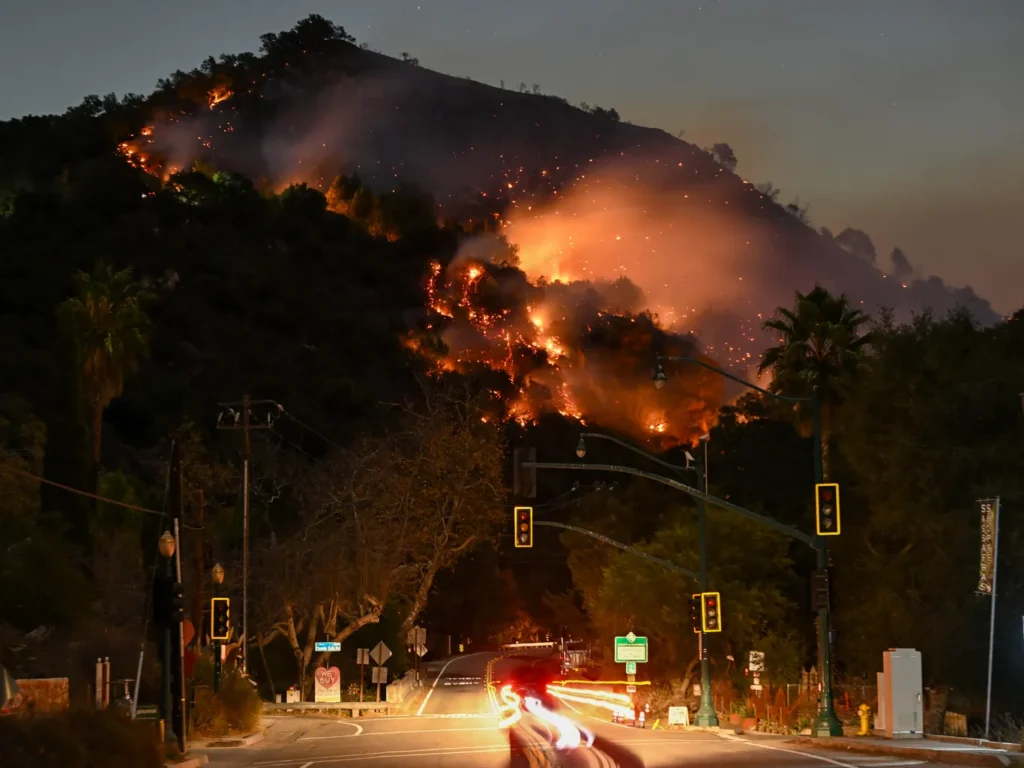Early in January 2025, several fires erupted around the Los Angeles area, causing one of the city’s worst wildfire disasters ever. The Palisades Fire, which has been called the most destructive fire ever recorded in Los Angeles and caused a huge loss of life and property, was the most important of them.
Important Data and Statistics
- Casualties: At least 11 people have died due to the fires, with the toll expected to rise as search efforts continue in devastated neighborhoods.
- Devastation: Approximately 56 square miles (145 square kilometers) of land have been affected by the destruction of over 12,000 buildings, including residences and commercial buildings.
- Evacuations: Approximately 153,000 residents were ordered to leave, while another 166,800 were warned to leave. To stop looting, evacuation zones were subject to a curfew.
The Effects of the Fires
Communities have been severely damaged by the flames, especially in the Pacific Palisades neighborhood, which is well-known for housing famous people. During the chaotic evacuations, many residents were forced to leave their cars and escape on foot through clogged roads and heavy smoke. According to reports, abandoned cars blocked roads, causing some homeowners to employ bulldozers to make room for rescue workers.
Human Narratives
When residents have returned to their communities, They saw heartbreaking scenes of destruction .In addition to losing their houses, many have also lost priceless family memories. One person complained the loss of family photos and objects after returning home to discover it completely destroyed by fire. Families suffer a great deal of emotional distress as they search through the rubble for traces of their former lives.

Strategies to Deal with Fires
To fight the fires, firefighters from throughout California and the surrounding states have come together. Strong Santa Ana winds that first fanned the fires presented difficulties for them even after obtaining aid. Thanks to a modest improvement in the weather over the weekend and a decrease in wind speed, firefighters were able to make some headway against the fire.
Deployed Resources
- Aerial Support: Water and fire retardants have been dropped on active fire zones by helicopters and airplanes.
- Ground Crews: Thousands of firefighters are directly fighting fires, putting in endless hours to defend buildings and lay fire lines.
Government Reaction
A public health emergency has been established by California Governor Gavin Newsom as a result of the region’s air quality being negatively impacted by toxic smoke. He requested investigations into infrastructural failures that might have made the situation worse, like dry hydrants and non-operational reservoirs at crucial times. Concerns have been raised about local officials’ preparation and resource allocation in the run-up to the fires.
Possibilities for the Future
Despite a brief improvement in fire conditions, predictions suggest that strong winds may return, increasing the possibility of additional fire outbreaks in the days ahead. Critical fire weather conditions could continue throughout January, according to a warning from the National Weather Service.
Communities will have a difficult time reconstructing their homes and lives following this devastating incident when recovery operations get underway. As Los Angeles citizens deal with loss and uncertainty following these historic wildfires, their fortitude will be put to the test.











